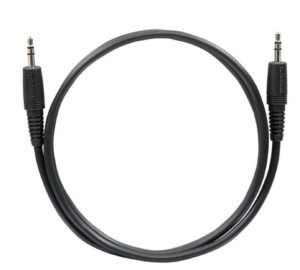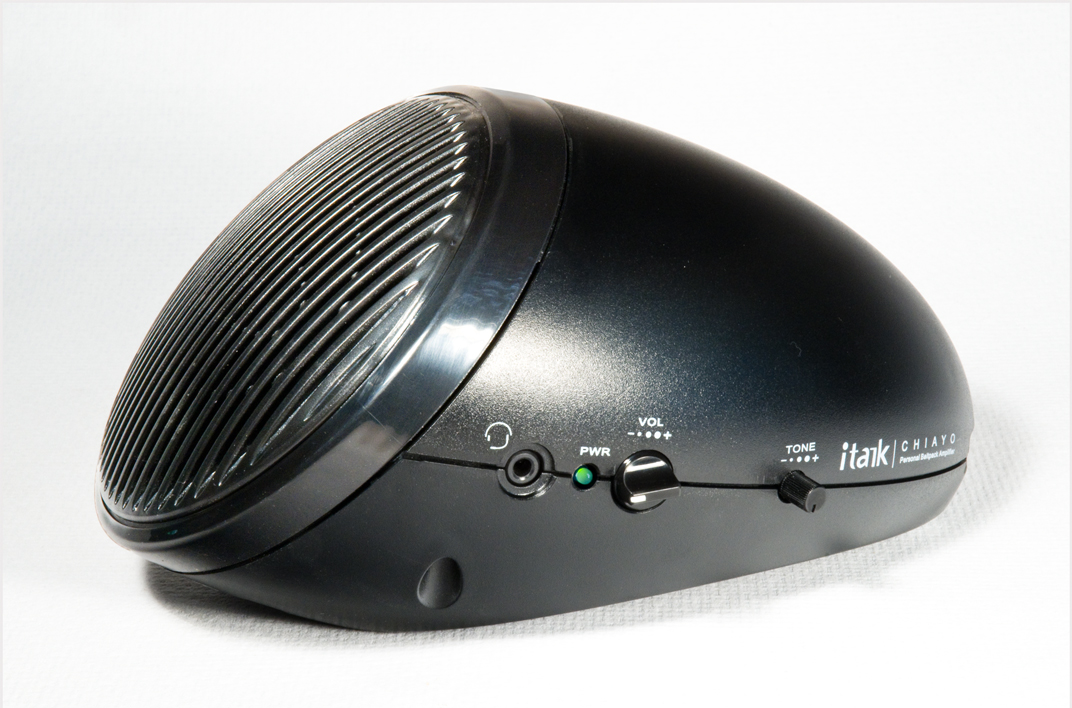![]()
Mike O’Kane Art & HiSpeak Communications
HiSpeak and Loudspeakers
Here are some tips.
- Acoustic feedback.
Because of the high amplification involved with loudspeakers, a loud unpleasant feedback squeal can occur if the microphone is not completely sealed to the mask. Once this is understood, it is quite manageable/preventable. Additionally, the yellow microphone lead may have to be moved slightly to minimise any hum.
- Choosing a loudspeaker.
If you have a ‘boom box’ with 3.5mm jack connection, this might suffice, depending on the model.
You will require a connector lead 3.5mm to 3.5mm (1~ 1.5 metre long depending on circumstances), mono, or stereo.
This lead connects between the headphone jack of the HiSpeak amplifier and the input jack of the boom box.
- Positioning the loudspeaker.
The loudspeaker is best positioned a short distance from the mask to get good sound quality, and to facilitate a more normal conversation situation.
Alternatively, an iTalk loudspeaker (sold separately) has produced good results.
The portable iTalk (sold separately) is a relatively expensive loudspeaker, however on trials it has truly proved to be a very competent portable loudspeaker, because of the sound quality and the ten watt power output rating. (It comes with connector leads.)
- an example using the iTalk.
‘It works very, very well.’
Michelle was caring for Josh who had advanced Muscular Dystrophy disease. Once he needed to use the CPAP mask 24/7, Josh became a bit more isolated. The loudspeaker could at least restore a small amount of the independence Josh had lost.
‘Battery life of the loudspeaker is only a day if the speaker unit is left switched on.’
Four rechargeable AA batteries can be fitted. The iTalk loudspeaker is supplied with a charger; note that authority approval would be required for charger use in some oxygen-rich hospital environments.
- Outdoor situations.
Depending on the type of speaker used, outdoor use might be an option. Once again position the loudspeaker close to the mask; partly to reduce the equipment’s visibility, and partly to get more natural communications

